Neurodiverse Interns Showcase Their Talent in Tech
Story by:
Published Date
Article Content
Enthusiasm, hard work and talent were on display at the end-of-summer Neurodiversity in Tech internship showcase at UC San Diego Qualcomm Institute’s (QI) Atkinson Hall. The 18 interns presented their summer’s work creating educational video games to a crowd of enthusiastic supporters, clients, family members and funders.
“You might ask, ‘Why are we doing this?’” said Pamela Cosman, the program’s director and professor in the Department of Electrical and Computer Engineering (ECE) at the UC San Diego Jacobs School of Engineering. “Neurodiversity, which encompasses autism spectrum condition, ADHD and learning differences, is a growing population, and there can be really high unemployment, particularly for people on the spectrum. The need, as we see it, is for both training on durable hard skills and tools for tech jobs, and also trying to support soft skills needed for employment.”
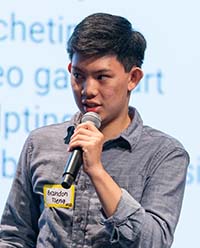
The nine-week Neurodiversity in Tech internship at UC San Diego is a rare opportunity for neurodiverse young adults to develop both sets of professional skills in a supportive environment. On the technical side, the interns learn programming, design and project management software as they take on a role common in video game development, such as artist, designer, programmer, project manager and sound designer.
But soft skills are also front and center. Not only do the interns interact with each other as part of teams with the guidance of a mentor, they respond to the needs of clients who have requested a video game product. In addition, twice-a-week lunch-and-learn sessions foster professional development in areas such as the creation of resumes and LinkedIn profiles, public speaking and teamwork.
“This program taught me so many things—it’s kind of mind boggling,” said intern Brandon Tseng, who is an electrical engineering student at UC San Diego. “As the programmer for my team, I learned version control (which was hell), and Unity and C# [programming languages]. I even met people in the gaming industry—real people who are working. I learned coding, and I learned about collaboration, and I got to meet awesome, amazing new people.”
Draggin’ Eggs
At the showcase event, the first team on stage presented a game it created called Draggin’ Eggs, aimed at teaching 8 to 12 year olds concepts of classification.
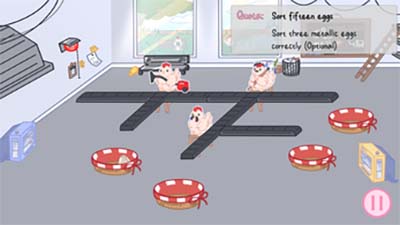
To draw the young audience in, the team set the game in a magical, fantasy nursery that cared for dragons and dinosaurs. The game’s players were tasked with sorting eggs that came down a conveyor belt into different baskets destined for distinct incubators. With the assistance of chicken helpers, the players organize the eggs based on their visible characteristics.
“The specific mechanics of the game were inspired by the basic concept from Lisa [Hardy of the nonprofit Concord Consortium] and Matt [Lewandowski of Team2Bit Game Studio], our clients,” explained Andrew Elie, project manager for the team. “Their basic idea was a game that revolved around an educational approach to classification of various objects… The approach that we took was to bake those concepts into the game mechanics, so, as the players engage with those mechanics, without even realizing it, they’re learning about these various concepts.”
“The chickens do make mistakes, though, which can help the player learn about things like false positives, false negatives,” added Talulla Allen, the designer for the team and a student at University of Baltimore working toward a bachelor’s in simulation and game design. The team also included interns Jupiter Defibaugh, Annie Wong and Harry Yu.
Team members expressed pride in their accomplishments given the short time available, highlighting their generalized “building block” approach which made it simple to create different levels.
“We absolutely surpassed my wild expectations [of] how quickly we were able to come together and build this game,” said Elie. “If we had one more week, I think we would be able to get to 10 levels.”
Alert Cali-s’more-nia
The next team presented a game designed to educate players about California wildfire management with the perspective of client QI Research Scientist Dominique Rissolo, who is also archaeologist and tribal liaison with the UC San Diego-based public safety and emergency response program ALERTCalifornia.
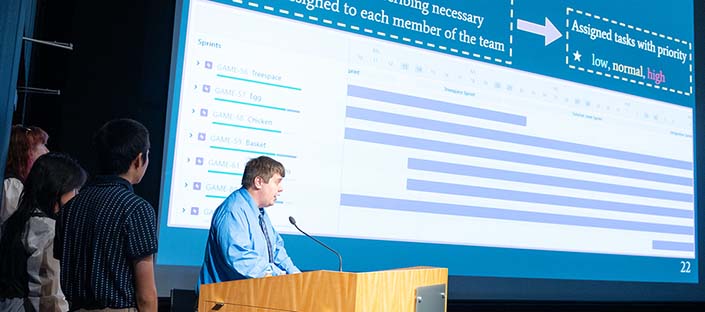
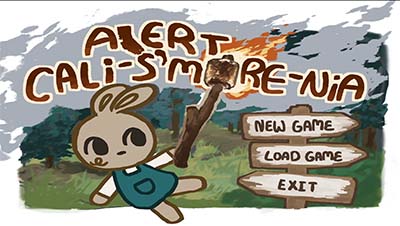
“Our objective was to inform players about the ALERTCalifornia program and the concept of healthy fire stewardship [including those used by Native peoples],” said intern Aaron Wixson, a recent graduate of UC San Diego who majored in cognitive science (design and interaction specialization) and minored in computer science. “Our concept is that you, the player, are a member of ALERTCalifornia, and you travel all around the state, helping the local creatures with fire management in order to secure this year’s S’mores Festival.”
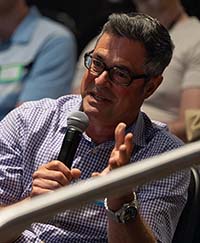
Players advance their cause of bringing back the S’mores Festival, which had been canceled for the past several years due to fire hazard, by completing two different types of puzzles. In a “firefighting” puzzle, the player digs trenches to block the fire from reaching prized territory. In a “fire lighting” puzzle, the player lights fires while traversing a maze.
Rissolo congratulated the team—which also included interns Angelina Xu, Aaron Wixson, Jai Lingenfelter, Sanjay Srikanth, Angelina Xu, Lillian Yueng and Merlin Ho—on its work.
“This was a learning experience for me as a client,” Rissolo said. “Many of the problems that we face in California and beyond suffer from a lack of good ideas. What I find most exciting about working with these teams is that programs like these activate and empower diverse ways of solving problems, of approaching challenges, and it’s those ideas that really are most transformative.”
Operation Incorporation
In the next project, interns Brandon Tseng, Declan Mintz, Chlo Bareño and Zelda Waite collaborated in the creation of the game Operation Incorporation. Their client, ECE professor Michael Yip, tasked them with creating a game for a sixth-grade audience that taught basic operating room procedures and medical technology.
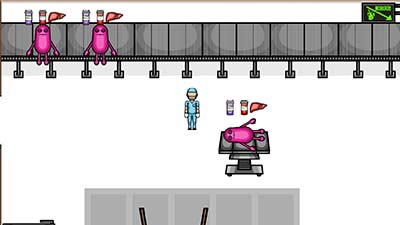
The team approached the challenge with humor and creativity. To win the game, players, who take on the role of doctor, must successfully treat five patients, who were shaped like beans to appeal to their middle school audience but with human-like organs to help teach anatomy. Patients were afflicted with one of three diseases—liver failure, appendicitis or gallstone disease—each of which required a different set of treatments from the doctor-player.
“We have a conveyor belt that delivers patients into the room,” explained Mintz. “There are several stations that the player can interact with, such as the organ fridge, the medicine cabinet, the blood station and the surgery table. The doctor’s objective is to treat patients. So once the patients are treated, they are sent to the patient beds. But if the doctor fails to tend to a patient, they get sent into the morgue. [This is our] dystopian hospital.”
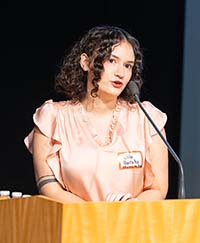
Despite producing a functional and entertaining game in the nine-week timeframe, the team was brimming over with ideas they didn’t have time to implement. These included adding more diseases and transplants, features such as a health bar or pain level bar and audio, and educational components about anesthesia, post-operative care, CPR, breathing support and the price points of medications.
All of the team members were enthusiastic about how much they learned from the project. Bareño, for one, said: “It was a great opportunity to get my foot in the industry as a designer. I believe this also gave me good experience with collaboration and communication, because as a designer, I’m going to need resources from other people.”
Hue Hunt
One of the innovations in this year’s Neurodiversity in Tech internship program was the introduction of an advanced team, which brought back 2023 interns Isabel Merced Galindo, Axis Familant and Joshitha Muthukristhnan to refine their prototype game from 2023, Hue Hunt.
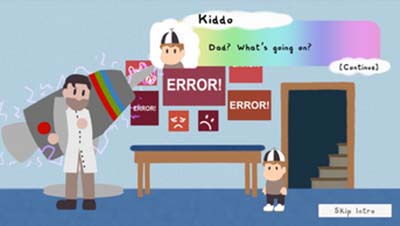
Hue Hunt is centered on a young boy who goes out into the world to restore color after his dad accidentally zaps it away. The game, created for ECE professor Nick Antipa, is designed to teach kids from third to fifth grade the physics principles of light, including reflection, refraction and dispersion.
To bring the game from “prototype to polish,” the team made the levels longer, patched bugs, updated art and added new content—including a rock-eating creature named Shlomo, based on a Jewish mythological creature called a shamir.
Importantly, the team also conducted “play testing,” in which they observed friends and family playing the game to see what elements needed to be improved. This led to adding more explicit educational content and fleshing out the instructions to make the game easier to follow.
Not only did the interns take their game development skills to a new level over the summer, they also took pride in making a contribution to a cause they believed in.
“We hope that Hue Hunt, in its polished state, can be used for outreach in middle and elementary schools, because we understand that STEM outreach is extremely important,” said Merced Galindo, who is currently attending the University of Southern California for game design. “It’s important to show that these physics concepts don’t have to be intimidating. They can be intuitive. They can be fun. And we hope that our client, Nick Antipa, goes out and uses this for outreach in his multiple programs, because … we think that it shares a very important message.”
As the presentation concluded, congratulations abounded, and audience members had the opportunity to play the games and chat with the interns over lunch.
The 2024 Neurodiversity in Tech internship program was funded by the National Science Foundation, Foundation for Developmental Disabilities, Northrop Grumman, Motorola Solutions Foundation and the State of California.
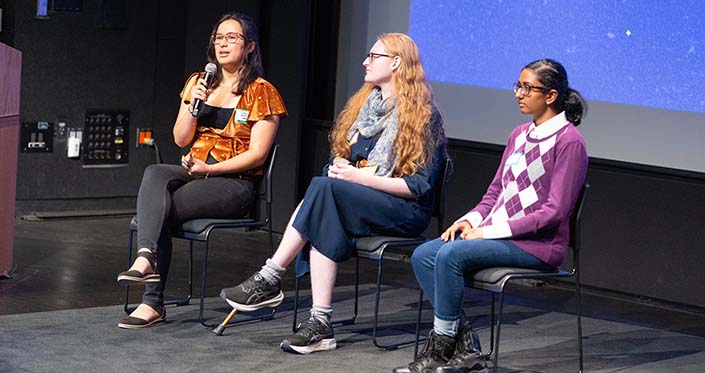
For more information on the Neurodiversity in Tech program, see https://ndtech.ucsd.edu.
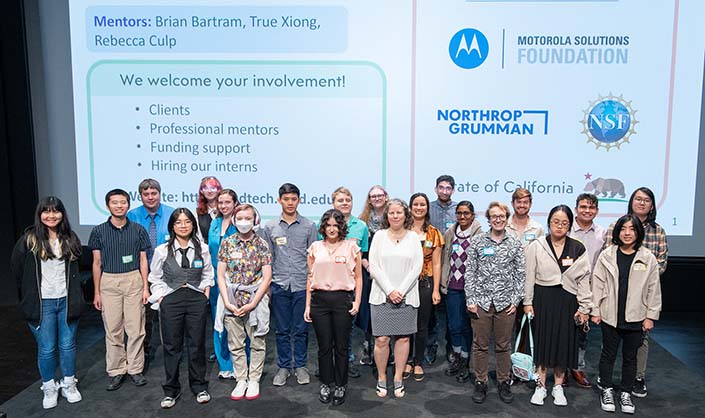
Share This:
You May Also Like
Stay in the Know
Keep up with all the latest from UC San Diego. Subscribe to the newsletter today.




